Like many car enthusiasts, I am addicted to horsepower, torque, and otherwise raw performance. It’s not until you get older, have kids, or live through a car accident, you start thinking about safety. Even modern day muscle cars are engineered for safety; look no further than the specs on the Dodge Challenger and Charger. Even with their incredibly powerful engines, both have at least 70 available safety features and a 5-star rating from the National Highway Traffic Safety Administration.
Collision Reflection
In 2009, I was coming home from a sales meeting in Minneapolis-St.Paul with my co-workers from Sioux Falls Ford. We sustained a rear impact in a road construction zone on I-35; the truck that hit us was moving at full speed and didn’t see us stopped in traffic. The blunt force caused us to side swipe the vehicle ahead of us as we plummeted towards the ditch. We were in a 2009 Ford Explorer, one that had 5-stars from NHTSA for rear impacts.
I was sitting in the back seat and suffered serious spine and neck injuries, but the bottom line is, I am alive. Given I was working for Ford at the time, my personal experience with the Explorer in this capacity made it much easier to sell to families who inquired about its safety.
Accident Free World?
Advocates of autonomous driving propose a world of advanced safety; one where collisions like I experienced and traffic related fatalities cease. Automakers like Volvo are some of the most vocal, petitioning world governments to invest in the infrastructure necessary for autonomous vehicles. Volvo’s Vision 2020 goes so far as to say nobody will be seriously injured or killed in a Volvo by that time. Tesla Motors believes strongly in autonomous tech too, recently announcing plans to make all of their cars capable of Level 5 autonomy.
Recently, we attended the Automotive IQ System Safety conference in Las Vegas. One of the main questions was how safe is safe enough, but the elephant in the room was that computerized drivers are more reliable and safer than human ones.
Do you believe this is possible?
At The Roots
Recently, Instamotor detailed the history of traffic and vehicle safety in the United States. It’s interesting to think about how it started with stop signs and traffic lights, something we take for granted. Even I get frustrated at long red lights; you know the feeling, right? However, it took a fatal accident for them to be incorporated in more places than just Detroit. Do you think it’s possible, when after the first lights and stop signs were installed, proponents believed they had solved the problem of fatal accidents?
When Béla Barényi developed crumple zones for Mercedes-Benz, something all cars benefit from today, did people say it was the end of fatal collisions? What about other Mercedes-Benz innovations like anti-lock brakes, or General Motors and airbags? At the time, could proponents have thought they arrived at a traffic fatality free world?
Instamotor goes further, citing the 1959 work of Volvo’s Nils Bohlin, who patented the three-point safety belt, an invention later released into public domain for all automakers to use. Is it fair to say, when the PV544 arrived with the three-point safety belt, there were some who thought it might be the end of fatal accidents?
I can only imagine that is exactly what they wanted to happen.
It’s a noble goal.
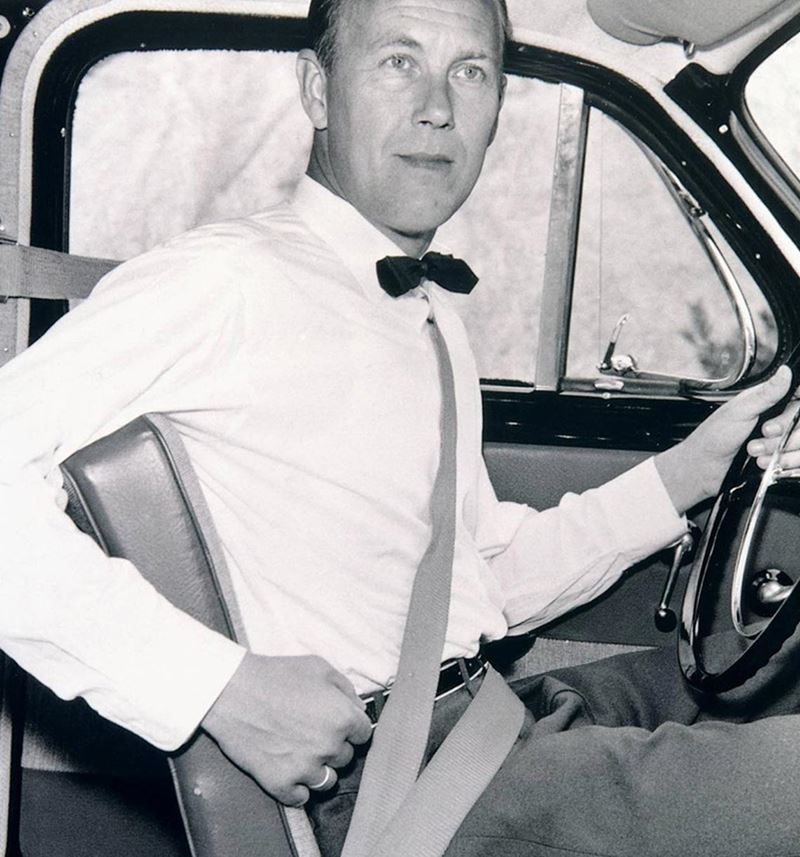
Volvo engineer Nils Bohlin demonstrating the three-point safety belt in 1959. Since then, it’s estimated that over one million lives have been saved as a result of Volvo Cars waiving its patent rights. Photo: Volvo Car Corporation.
Active Versus Passive Safety
No doubt the structural reinforcements of that 2009 Ford Explorer saved my life. In my work in the auto industry today, I hear stories about how modern tech like lane keep assist, blind spot detection, forward collision warning, and reverse cameras have prevented close calls. This technology is semi-autonomous and can by no means take the place of a responsible, rested, and sober driver, but in certain instances, it works. These individual technologies are each excellent advancements, but they still don’t prevent every traffic related fatality.
So, is the answer then, full on autonomous driving?
Things like seat belts, airbags, and crumble zones are more on the defensive spectrum, meaning they are engineered for the impact but outside of a hit, they do nothing to actually prevent it, only the injuries resulting hence forth. Advancements like forward collision warning and pedestrian detection are playing more offense and can truly prevent traffic related injuries and deaths, but at some point, that technology has limits.
For example, it can be turned off.
Vital Statistics
According to the Insurance Institute for Highway Safety, there were 30,057 fatal motor vehicle crashes in the United States in 2013, in which 32,719 deaths occurred. By contrast, there were 29,989 fatal motor vehicle crashes in the United States in 2014, in which 32,675 deaths occurred. The percentage of pedestrian deaths both years was the highest in Washington DC, 45 percent (2013) and 39 percent (2014).
Granted, this is a decrease and is evolving safety tech in our cars partly responsible? Sure, I would give that some credit, but the decrease seems slow and marginal, given all of our advancements. How will autonomous driving fare in reducing these numbers? We simply have no idea, no matter how much we may want to believe in the technology.
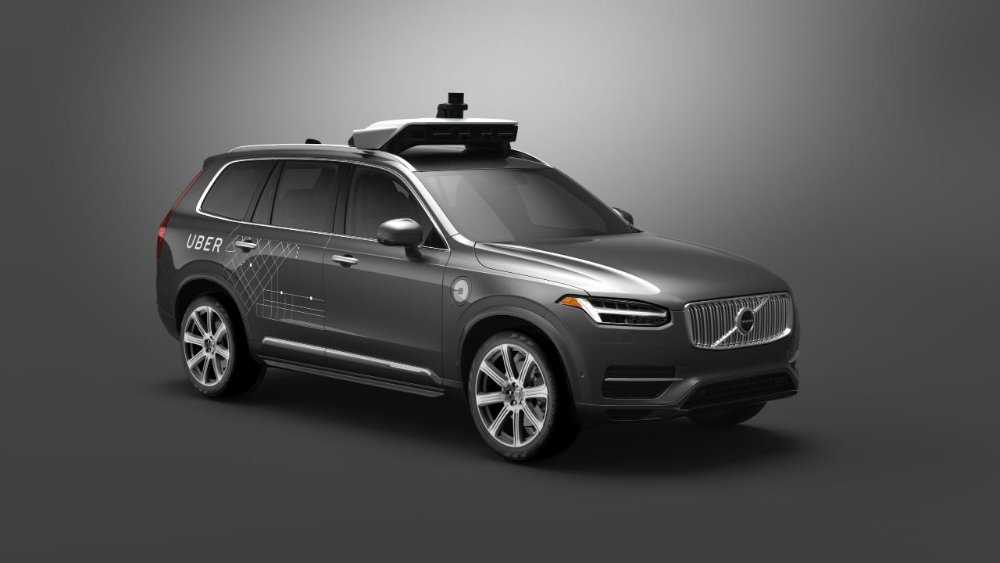
Earlier this year, Volvo and Uber announced plans to develop autonomous vehicles together. Photo: Volvo Car Corporation.
Simple Solutions?
How do we prevent fatal collisions and create this infrastructure utopia proponents of autonomous cars often vividly describe? Easy. Don’t let humans drive. In theory, that’s the solution. Create full autonomous systems were no accidents can occur; that solves the problem of traffic accidents and fatalities.
Or does it?
What if we filed autonomous capability under the same category as every other safety option we examined above? If traffic lights don’t prevent every collision, if seat belts don’t prevent every fatality, if automatic braking and adaptive cruise control haven’t, then is it possible fully autonomous cars won’t either?
Would you want a fully autonomous car to have safety belts and crumple zones?
If the answer is yes, then take a good hard look at why? If an autonomous system can truly prevent all collisions and fatalities, why would we need such archaic and dated safety designs? If the answer is no, do the same. If the system fails, what defensive devices does your automobile have, should it careen off the autonomous tracks?
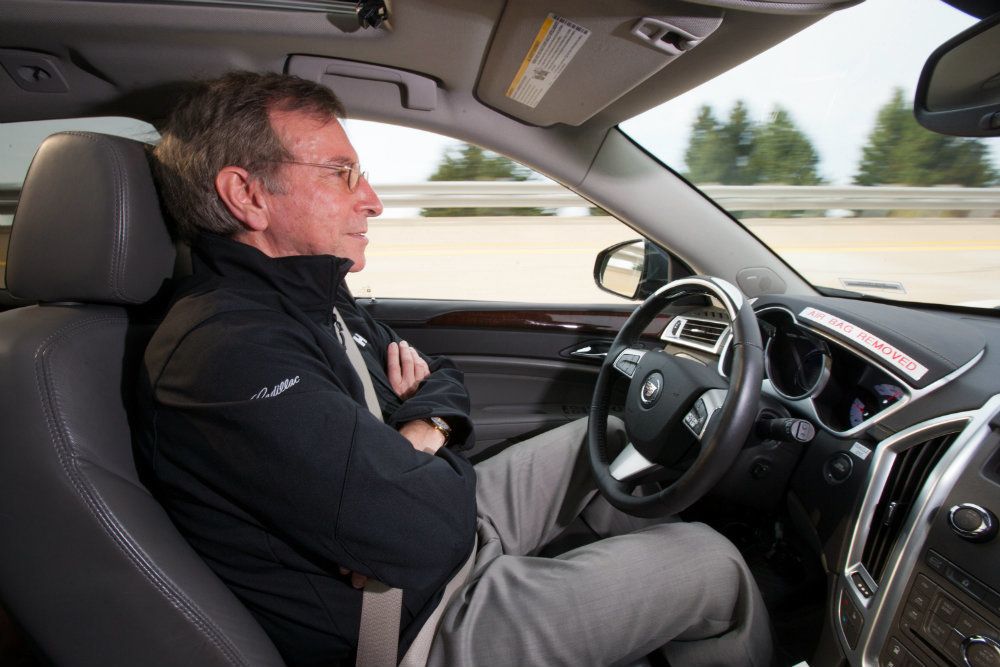
Cadillac road testing a semi-autonomous program called Super Cruise in this 2012 photograph. The technology is capable of fully automatic steering, braking, and lane-centering in highway driving under certain, optimal conditions. Photo: General Motors.
By Contrast
Then again, we would never think to take a parachute with us on a commercial airliner. In fact, on most flights, I see people snoozing during the safety demonstration. Although planes do crash, perhaps people feel it rare enough that it isn’t worth the effort (or the questions from the TSA) to try and cram a parachute in the overhead bins of a packed flight. Knowing my luck, it would get gate checked, effectively rendering it useless anyway.
Maybe one day, our autonomous system will be so good, things like seat belts, crumple zones, and traffic lights will all be an afterthought, like how a parachute is when you board an airplane? I envision my grand kids now: “you drove cars that had the ability to dissipate intrusive forces away from the occupants, that’s so lame. Everybody knows cars don’t crash.”
Still, the bigger question becomes if autonomous vehicles don’t deliver on their promises, where does that leave us? Would the very concept of autonomy then become nothing more than a failed experiment, with its infrastructure left abandoned as modern day fossils?
I don’t know my friend, but the world ahead is both exciting and scary.
In the end, Instamotor says it best: “even as we look forward to the next several decades of self-driving car development, it serves us to know how far we’ve come by looking back at the timeline of vehicle safety standards and innovations.”
Their graphic below explains more:
Carl Anthony is Managing Editor of Automoblog and resides in Detroit, Michigan.
Cover Photo: Unsplash
http://www.automoblog.net/2016/10/28/future-fossils-of-the-autonomous-world-maybe-even-autonomy-itself/
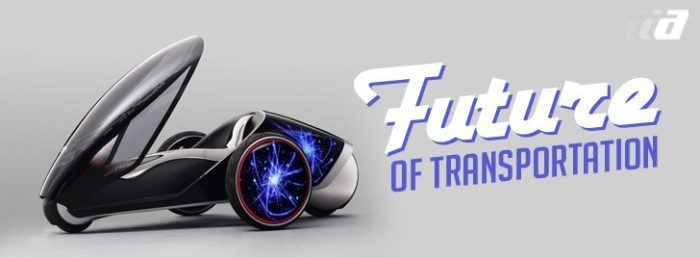
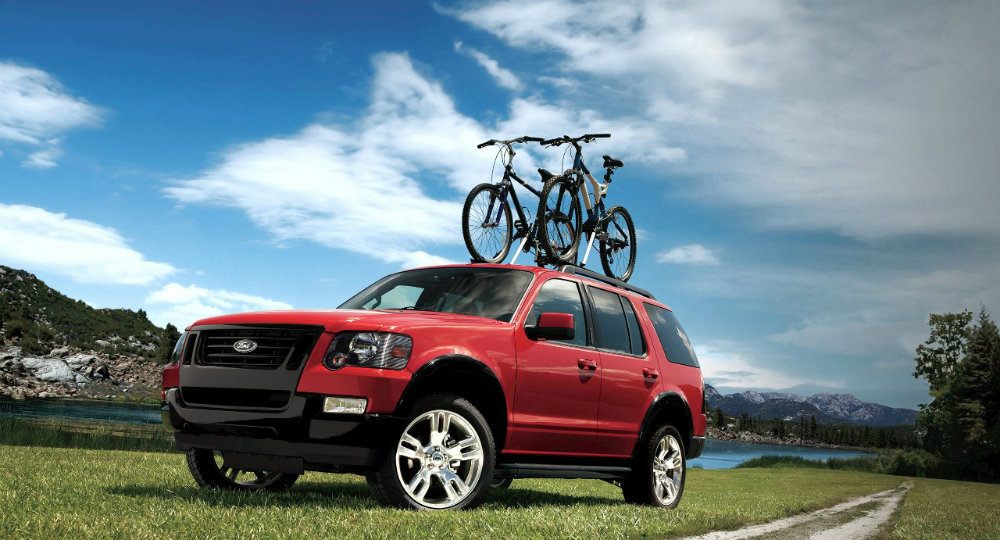

No comments:
Post a Comment